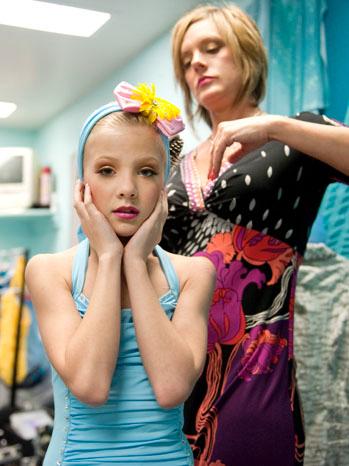Reality Television faces alarming ‘Kiddie Controversy’

‘Dance Mom’ and daughter.
February 8, 2012
Reality television is a phenomenon that has captivated American audiences for more than a decade and its crippling hold on the American psyche has gotten stronger in recent years.
Since MTVs debut of “The Real World” in 1992 this trend has evolved into a genre that tops charts and dominates the small-screen in the 21st century. Remaining steadfast for the second decade of its media lifespan, reality television constantly pushes limits to create new boundaries for acceptable broadcasting. Reality TV employs only the most intriguing, ridiculous and obscene of individuals to shock viewers and improve ratings.
Most recently, reality television has thrown children into the spotlight. Many critics have attacked such programs, but the audience can’t seem to get enough.
Toddlers and Tiaras, TLC’s primetime hit that debuted in 2009, is perhaps the forerunner in this strain of reality programming. Hour-long episodes offer the audience an inside look at one of Americas most extreme subcultures: the world of child beauty pageants.
Footage follows the lives of children and their pushy stage parents as the toddlers prep, primp, pose and finally parade across the stage at beauty pageants across the country. The stakes are high and the competition is cutthroat. Infants and adolescents alike are subjected to spray tans, manicures, costume fittings and rehearsals as they, or rather, their parents, anticipate heading home with the grand prize.
A similar program, “Dance Moms,” first premiered on Lifetime in July 2011. This self-proclaimed “docu-series” follows the budding careers of several talented young dancers, their doting yet dominating mothers and the high intensity drama that accompanies competitive dance.
Heavy on the mama drama, “Dance Moms” focuses primarily on the lives of the mothers of the dance world, America’s counterpart to Little-league baseball dads. Interactions between parent, instructor, and dancer create the basis for the show.
The allure of these programs seems to lie within the high intensity drama of the competition and the strain it places on relationships. Parents spend myriad time and money preparing their children for these contests but frustrations easily arise when the time comes for their little ones to strut their stuff onstage. The element of sheer absurdity in the conflict and content of this genre simultaneously appalls and fascinates viewers, keeping them glued to the screen season after season.
Both “Toddlers and Tiaras” and “Dance Moms” have wowed viewers during their short stints on the air yet have also created quite some controversy. Questions arise regarding the limits of television programming. The lives of these children, the good the bad and the ugly are being broadcasted across the country. The intrusive nature of reality television seems self-evident, but this causes uproar when focusing on children.
The provocative routines and nerve-wracking pressure these talented youngsters face are also a cause for criticism. As competitors parade across the stage with heavily made-up faces and midriffs showing, the industry and the parents are being accused of “sexualizing” their young girls. People Magazine reports that in recent episodes the toddler pageant princesses of TLC’s hit series appeared on stage dressed much too maturely, some girls even imitating Julia Roberts’ character from Pretty Woman.
Critics and viewers agree that these shows depict a classic case of desperation: parents trying to live vicariously through their children. It happens in sports and it happens in the entertainment industry and now its happening right in front of us on the screen. What values are articulated by these trends?
Mental health professionals scrutinize the genre’s heavy emphasis on appearance. A 2007 study conducted by the American Psychological Association noted this preoccupation with beauty as a cause of “three of the most common mental health problems of girls and women: eating disorders, low self-esteem, and depression.”
Even Hollywood has chimed into the debate. Actress Katherine Heigl has been cited by Us Weekly condemning the behavior condoned on Dance Moms, advocating her belief that the show sends the wrong message to young girls.
“I watched with open-mouthed amazement as girls as young as seven were encouraged to dress provocatively and shimmy around a stage,” Heigl said. “I was also horrified by the way their instructor spoke to them when she felt they weren’t up to snuff. It was demeaning, belittling, and downright unkind.”
Regardless of the presence of cameras, these extreme subcultures will continue to exist. The question remains whether this genre of reality television perpetuates deviant behavior. In the meantime, ratings continue to soar as the industry pushes its limits.







